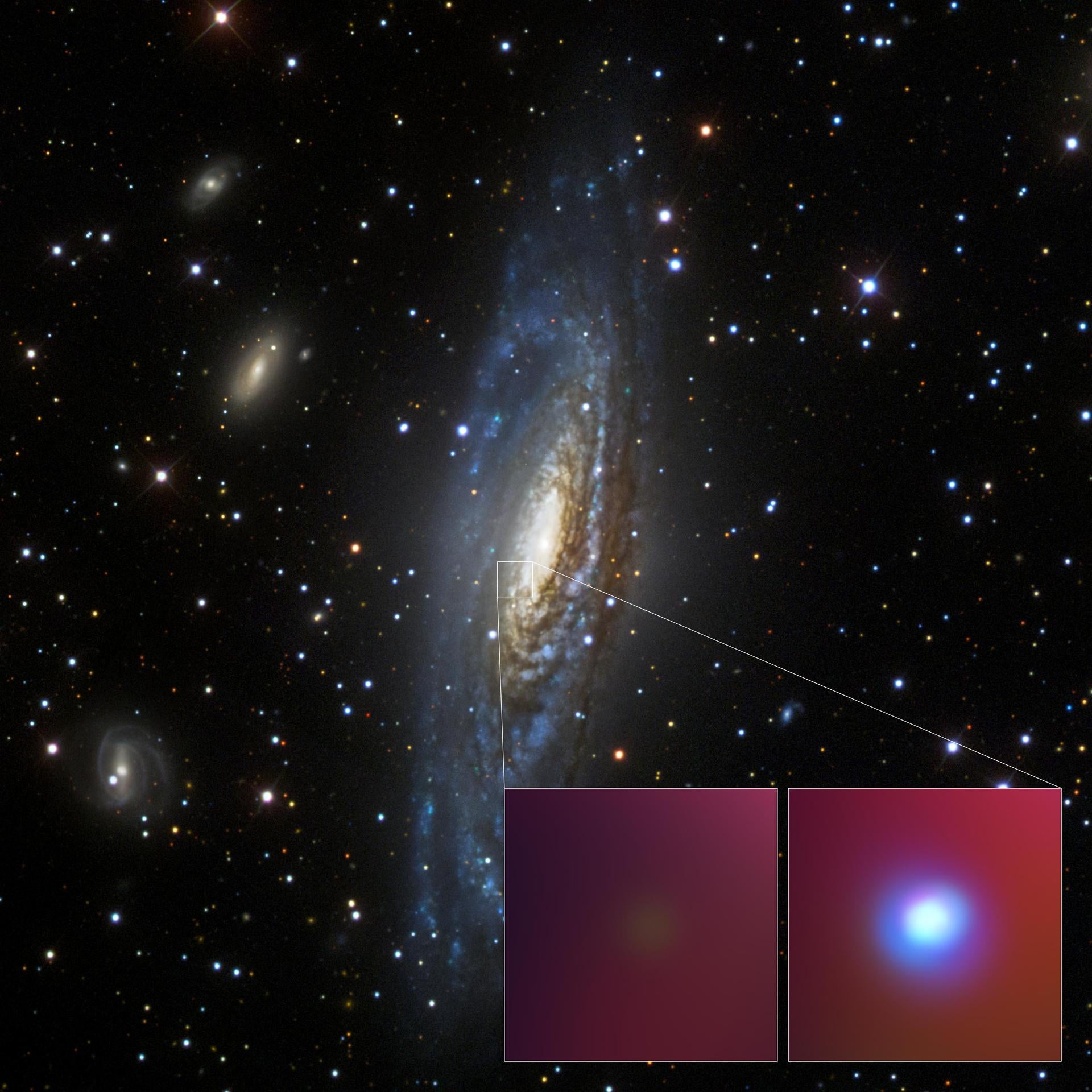Astronomers reveal new clue as to why giant stars explode
After trying for eight years to make the puzzle pieces fit, astronomers now argue they had the wrong shape in mind when it came to a distant supernova

Your support helps us to tell the story
From reproductive rights to climate change to Big Tech, The Independent is on the ground when the story is developing. Whether it's investigating the financials of Elon Musk's pro-Trump PAC or producing our latest documentary, 'The A Word', which shines a light on the American women fighting for reproductive rights, we know how important it is to parse out the facts from the messaging.
At such a critical moment in US history, we need reporters on the ground. Your donation allows us to keep sending journalists to speak to both sides of the story.
The Independent is trusted by Americans across the entire political spectrum. And unlike many other quality news outlets, we choose not to lock Americans out of our reporting and analysis with paywalls. We believe quality journalism should be available to everyone, paid for by those who can afford it.
Your support makes all the difference.The mystery of how giant stars spend their last moments before exploding in radiant death just got a little closer to being solved, in part by researchers who challenged the idea that implied models are sufficient for studying dying stars.
In a paper published Tuesday in The Astrophysical Journal, astronomers at the University of Texas, Austin describe a new model for what they think happens when some of the biggest stars in the cosmos explode as supernovae at the end of their lives, before turning into neutron stars or black holes.
When stars eight times as massive as the Sun or larger burn through their hydrogen fuel, they begin fusing ever more heavy elements such as oxygen, silicon, and eventually iron. At that point, unable to sustain the thermonuclear reactions at their core that push against their own massive gravity, they collapse in on themselves and explode in a supernova.
Despite burning through most of their hydrogen, some supermassive stars retain an outer layer of hydrogen gas up until the time they explode. But a certain type of supernovae, Type IB, involves stars that have lost this outer layer of hydrogen.
Scientists like University of Texas, Austin professor of astronomy Craig Wheeler would like to know how those stars lose that hydrogen.
“What we’re trying to understand is what makes these massive stars blow up,” he said. “Understanding what mass ejection they do shortly before they explode is one piece of that, in some sense, even yet bigger story of how the massive stars evolve and die.”
In 2014, a star 40 million light years away in the spiral galaxy NGC 7331 went supernova, and observers quickly classified it as a Type 1B, as there was no evidence of hydrogen in the light coming from the explosion. But as Wheeler and his colleagues watched the light from SN 2014C over the coming months and years, they were puzzled — they began seeing evidence of hydrogen where there had been none.

“If you look at a supernova that when it blows up has no hydrogen in it. And then a little bit later, months, a year, even a decade later, starts showing evidence for hydrogen emission, that suggests that it used to have hydrogen it blew it off into the surrounding medium,” Dr Wheeler said. “Then the supernova explodes and collides with that previously rejected hydrogen.”
What Dr Wheeler and his colleagues suggest in the paper is that SN 2014C took place in a binary star system and that the companion of the star that exploded helped draw off the outer layer of hydrogen from the dying star before it exploded. The stellar winds of both stars then pushed the hydrogen out into the space around the pair in a “common envelope.”
But that’s not a new idea. What Dr Wheeler believes is important is the shape of the common envelope — his findings show it has to be a disk.
“There’s an old joke that all physicists first assume that cows are spherically symmetric,” Dr Wheeler said, the point being that physicists often make simplifying assumptions about phenomena to get started on a problem. In the case of SN 2014C, he said, most of the models assumed that the common envelope around the two stars was roughly spherical, and that the supernova blast expanded spherically.
But when Dr Wheeler and his team crunched all the numbers, they found contradictions in the data so long as they tried to put them into a symmetrical, spherical model.
“It had to be asymmetric in some way, and so we’ve argued that [the hydrogen is] coming off in a disk, and that helps us to put all of the data together in a coherent picture,” he said. “Not just that it might be asymmetric, but it absolutely damn well must be asymmetric, is one of the main messages of our paper.”
Material orbiting massive objects as a disk is not unusual in astronomy, Dr Wheeler points out. The matter whirling around black holes before slipping inside is compressed into a disk, planets form out of disks of dust around stars, and galaxies themselves are, to an extent, disk-like.
But many physicists, Dr Wheeler said, have used spherical assumptions when using computers to model Type Ib supernovae to calculate the “simplest thing they could get away with that explored what they were looking at.”
“We’re going to have to do a pause on that,” he added.
And while questions of how astronomers model supernovae might seem arcane to lay readers, Dr Wheeler points out that they are pieces in a much larger puzzle that covers almost the entire cosmos. Supernovae are what generate the heavier elements like iron, silicon, and carbon necessary for Earth-like planets and Earth-like life, while the neutron stars and black holes these massive explosions result in tug and twist at the fabric of reality itself.
Better understanding how to model supernovae will help scientists better understand the universe, and Dr Wheeler is arguing that this asymmetric model may apply to many supernovae across the universe, and not just SN 2014C. He’s given it a lot of thought, but he readily admits he could be wrong, and is looking forward to the scientific community’s response to the paper.
“I think that our colleagues are going to have to sit back and, you know, rub their chins and think about this and assimilate that into their picture,” Dr Wheeler said. “There’s a meeting in Munich next fall that I’m not sure I’m going to be able to go to, but they’ll all be there and it would be great fun to have this conversation.”
Join our commenting forum
Join thought-provoking conversations, follow other Independent readers and see their replies
Comments